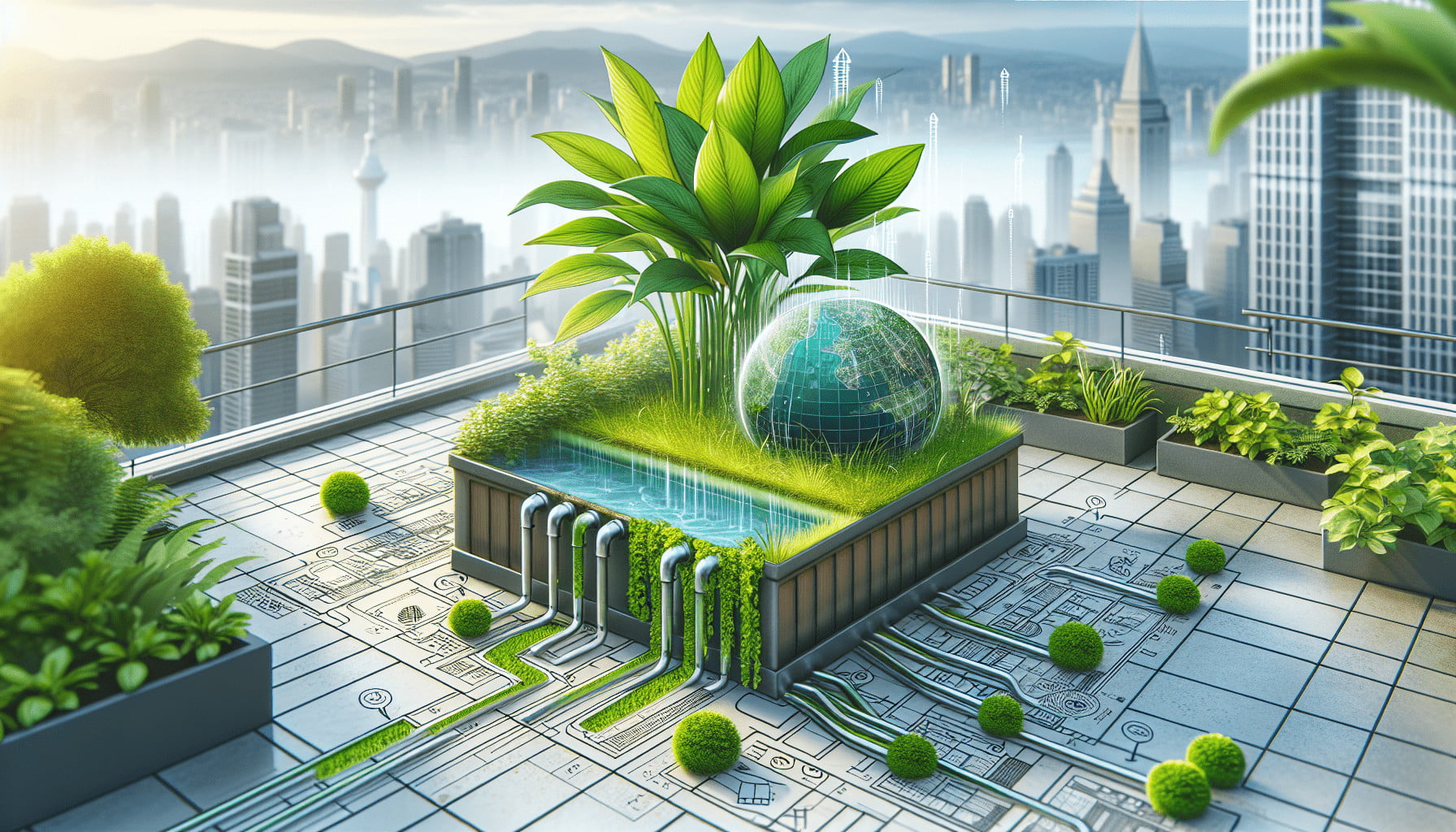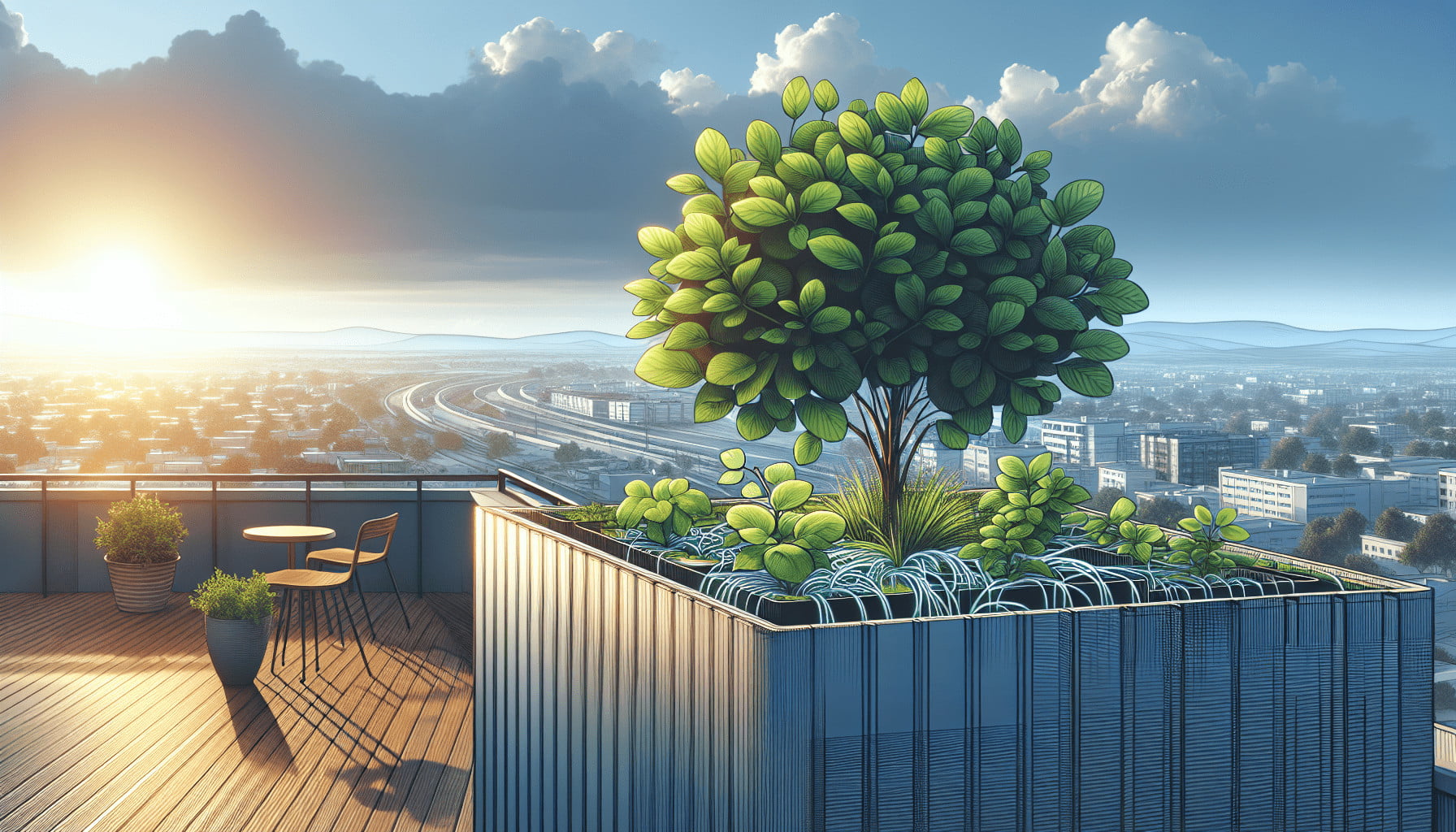Do you have a rooftop garden or are you planning to create one? If so, you’re probably excited about the potential for growing your favorite plants, herbs, or even vegetables in a unique setting. However, one of the most critical aspects you’ll need to get right is container drainage. Improper drainage can quickly turn your green oasis into a struggling collection of waterlogged plants.
6 Key Factors for Successful Container Drainage in Rooftop Gardens
Understanding the Importance of Proper Drainage
Proper drainage is essential for rooftop gardens, particularly those using containers. When water isn’t allowed to drain adequately, plant roots can become waterlogged and oxygen-deprived, leading to root rot and other issues. Understanding why this matters is your first step toward creating a thriving rooftop garden.
1. Container Selection
Choosing the right containers is a foundational step. Various materials, sizes, and shapes can influence how well-drained your garden will be.
Material Options
- Terracotta: Breathable, but prone to cracking in cold weather.
- Plastic: Lightweight and retains moisture well but may not be as breathable.
- Wood: Natural and aesthetically pleasing but can rot over time.
| Material | Pros | Cons |
|---|---|---|
| Terracotta | Breathability, natural look | Prone to cracking |
| Plastic | Lightweight, moisture retention | Limited breathability |
| Wood | Aesthetic appeal, natural drain | Susceptible to rot and decay |
Size and Shape
Choosing the size and shape of your containers is equally important. Larger containers allow for better root expansion but may require more soil and be heavier. The shape can affect water distribution and how well roots can grow.
| Size | Pros | Cons |
|---|---|---|
| Small | Easier to move and manage | Limited root space |
| Large | More root space, less frequent watering | Heavier and less portable |
2. Soil Composition
The soil composition can make or break your container gardening efforts. It needs to be well-draining yet retain enough moisture for the plants.
Components of Good Soil
- Sand: Enhances drainage but lacks nutrient retention.
- Organic Matter: Improves water retention and nutrient content.
- Perlite/Vermiculite: Increases aeration and drainage.
| Component | Pros | Cons |
|---|---|---|
| Sand | Excellent drainage | Poor nutrient retention |
| Organic Matter | Nutrient-rich, moisture retention | Can compact over time |
| Perlite/Vermiculite | Improves aeration & drainage | May float to the surface |
A good mix usually contains a balance of these elements to create optimal growing conditions.
3. Drainage Holes
Even with the right container and soil, drainage holes are non-negotiable. Without them, water has no way to escape, making it impossible to manage water levels effectively.
Placement and Number
More often than not, you’ll find containers with pre-drilled holes. Generally, the more, the better, as multiple holes ensure water can leave the container efficiently. The placement, usually at the bottom, can be complemented by side holes for larger containers.
| Placement | Pros |
|---|---|
| Bottom | Natural water escape |
| Sides | Additional drainage for larger pots |
4. Use of a Drainage Layer
Sometimes adding a drainage layer can further aid in keeping your soil well-drained.
Materials for Drainage Layers
- Gravel or Pebbles: A classic choice that offers good drainage.
- Broken Pottery: Reusing old pots can be a sustainable option.
- Activated Charcoal: Prevents mold and absorbs impurities.
| Material | Pros | Cons |
|---|---|---|
| Gravel/Pebbles | Readily available, effective | Adds weight |
| Broken Pottery | Recyclable, effective | Irregular shapes |
| Activated Charcoal | Fights mold, lightweight | More expensive option |
Lay a 1-2 inch layer at the bottom of your container before adding soil, ensuring water doesn’t become trapped.
5. Watering Techniques
How you water your rooftop garden can significantly impact drainage efficiency.
Methods
- Top Watering: Effective but can lead to uneven moisture levels.
- Bottom Watering: Allows roots to draw up water as needed, promoting healthy growth.
- Using a Watering Can with a Narrow Spout: Helps direct water precisely.
| Method | Pros | Cons |
|---|---|---|
| Top Watering | Simple, quick | Risk of overwatering |
| Bottom Watering | Even moisture, encourages root growth | Takes longer, not for all plants |
| Narrow Spout Can | Precise application | Requires manual effort |
6. Regular Maintenance
Lastly, maintaining your rooftop garden containers regularly is essential.
Key Maintenance Tasks
- Routine Checks: Inspect for blocked drainage holes and correct soil compaction.
- Seasonal Care: Replace or amend soil composition as needed.
- Pest Control: Watch for pests that could exacerbate watering issues.
| Task | Frequency |
|---|---|
| Routine Checks | Weekly to Bi-weekly |
| Seasonal Care | Seasonally, especially spring/fall |
| Pest Control | As needed, monthly inspections |
By following these maintenance tips, you ensure that your rooftop garden remains healthy and vibrant throughout the seasons.

Final Thoughts
Creating a successful rooftop garden involves more than just choosing your preferred plants. From selecting the right containers and soil to ensuring they have adequate drainage, every step plays a crucial role. Proper drainage not only supports healthy plant growth but also prevents issues that could spoil your rooftop oasis. By paying attention to these six key factors, you’ll be well on your way to enjoying a thriving, lush garden with minimal drainage issues. Happy gardening!

